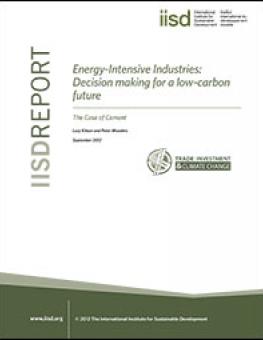
Energy Intensive Industries: Decision making for a low-carbon future - The case of cement
The cement industry is a major source of CO2 emissions, accounting for about 5 per cent of anthropogenic CO2 emissions.
Securing reductions in these emissions is critical if wider targets for emissions cuts—including the reductions of 80-95 per cent by 2050 set out in the EU roadmap and the reduction of 50-80 per cent by 2050 deemed necessary by the IPCC—are to be achieved. This paper aims to shed some light on the ways in which policy-makers can deal effectively with the tension between the need to achieve these ambitious mitigation targets and the need to minimize the economic impacts of climate policy in the very energy-intensive sectors where such mitigation may be most sorely needed.
You might also be interested in
Will the Inclusion of Voluntary Standards in Trade Agreements Lead to More Sustainable Trade?
The use of voluntary sustainability standards (VSSs) and similar systems in free trade agreements (FTAs) is gaining traction. Will it lead to more sustainable production and consumption globally?
Strategic Environmental Assessment for the Mining Sector
Strategic environmental assessments (SEA) are an essential tool for policy-makers working to develop a sector-wide vision for responsible mining.
Blackouts and Backsliding: Energy subsidies in South Africa 2023
Blackouts and Backsliding presents the latest energy subsidy data for South Africa.
Sustainable Asset Valuation of Parques del Río Norte in Medellín, Colombia
This economic valuation demonstrates the benefits of expanding urban green space in the city of Medellín, Colombia.